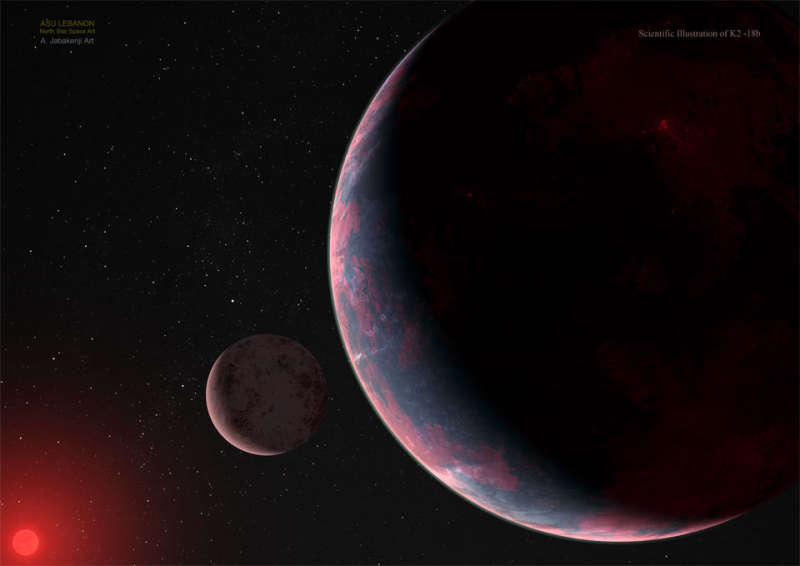APOD: 2023 September 20 B Methane Discovered on Distant Exoplanet

Explanation:
Where else might life exist?
One of humanity's
great outstanding questions,
locating planets where extrasolar life might survive took a
step forward in 2019 with the discovery of a significant amount
of water vapor in the atmosphere of distant exoplanet
K2-18b.
The planet and its parent star,
K2-18,
lie about 124 light years away toward the constellation of the
Lion
(Leo).
The
exoplanet is significantly
larger and more massive than our Earth, but orbits in the
habitable zone of its home star.
K2-18, although more red than our Sun, shines in
K2-18b's
sky with a brightness similar to the
Sun in Earth's sky.
The 2019
discovery
of atmospheric water
was made in data from three space telescopes:
Hubble,
Spitzer,
and
Kepler, by noting the absorption of water-vapor colors when the
planet
moved in front of the star.
Now in 2023,
further observations by the
Webb Space Telescope in
infrared light
have uncovered evidence of other life-indicating molecules -- including
methane.
The featured illustration imagines exoplanet
K2-18b
on the far right orbited by a moon (center),
which together orbit a
red dwarf star
depicted on the lower left.
| << Yesterday | 20.09.2023 | Tomorrow >> |

1999 2000 2001 2002 2003 2004 2005 2006 2007 2008 2009 2010 2011 2012 2013 2014 2015 2016 2017 2018 2019 2020 2021 2022 2023 2024 2025 |
Yanvar' Fevral' Mart Aprel' Mai Iyun' Iyul' Avgust Sentyabr' Oktyabr' Noyabr' Dekabr' |
NASA Web Site Statements, Warnings, and Disclaimers
NASA Official: Jay Norris. Specific rights apply.
A service of: LHEA at NASA / GSFC
& Michigan Tech. U.
|
Publikacii s klyuchevymi slovami:
ekzoplaneta - extrasolar planet
Publikacii so slovami: ekzoplaneta - extrasolar planet | |
Sm. takzhe:
Vse publikacii na tu zhe temu >> | |